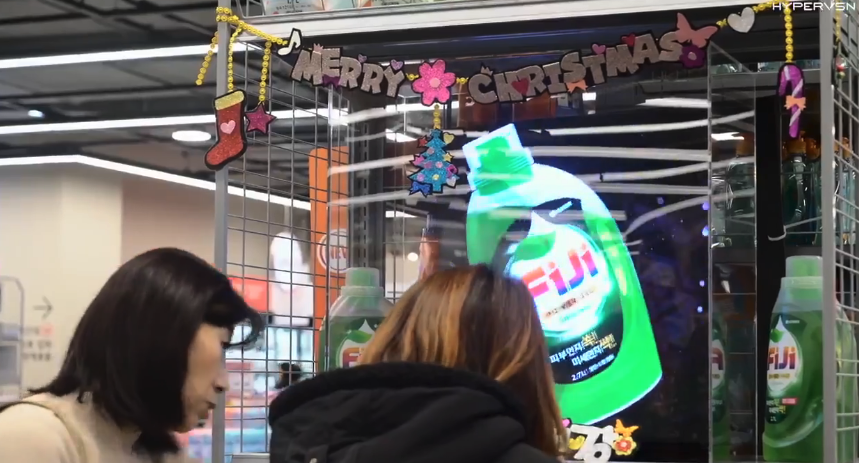
Those Madly-Spinning Light Wands Find Logical Homes At Retail End-Caps
October 9, 2019 by Dave Haynes
I’m not much of a fan of those madly-spinning LED light wands that kinda sorta do 3D holographic images, because eye candy tends to have a short shelf life and things that spin eventually fail. But the UK company that is the market leader for the tech may have found a good logical home for them – retail end caps.
HYPRVSN put up a video on Linkedin (see lower in post) that shows a series of the units at end-caps and on shelves at a Lotte, which is a giant supermarket chain in South Korea.
The units are, necessarily, in acrylic cases, so that curious shoppers don’t lose fingers or noses by getting too near the fan-like devices.
This temporary approach makes more sense to me than permanent installations, because there’s no question the things capture viewer attention (walk a big AV trade show and you always see attendees gawking at HYPRVSN or one of the Chinese copycat manufacturer exhibits).
But interest in eye-candy can be fleeting, as are the lifespans of most merchandising promotions on shelves and end-caps. So, having sufficiently portable to move around in stores to other positions would seem to be a good idea.
I have no idea if the store owns these or the brands. I’ve long thought big stores could make AV available, to rent at a premium, to brands who want displays but only need them for 30 days, not five years. Big exhibition services companies have made off like bandits in convention facilities, for years, renting $1,000 screens for $200 a day.
I spoke with HYPRVSN at Infocomm a couple of years ago, and one of the founders insisted the light wand had very high reliability. All I know is that in my 20 years in this industry, manufacturers have steadily been trying to remove moving parts – like fans and hard drives – from the gear installed at the edges of networks. These things are essentially fans with LED light blades, so an end-user is putting them in and then crossing his or her fingers.
It doesn’t matter that much if a single unit goes down. It’s just dark. It would be more of a problem with an array of them, with one out and a big hole in the creative.
This, if you are curious, is how holograms are defined by hologram nerds …



Leave a comment